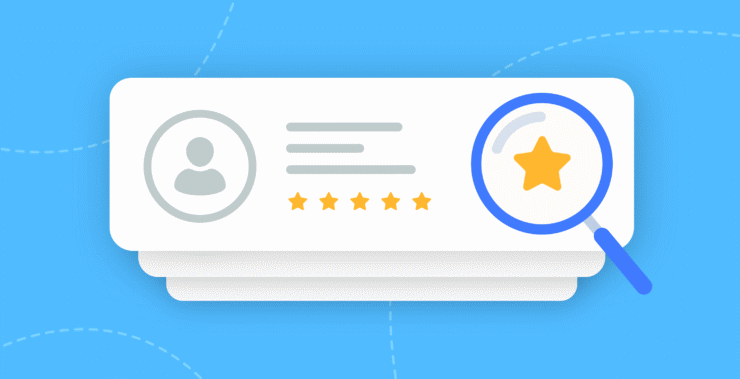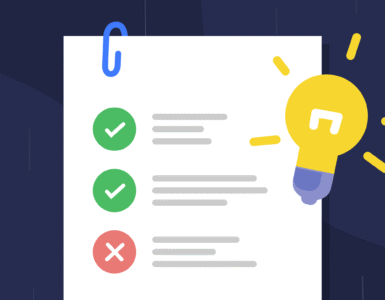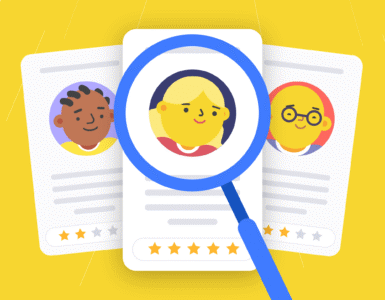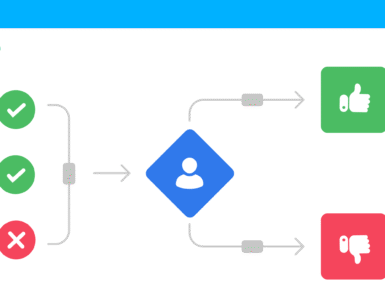In every recruiter’s life comes the time when the goal quietly shifts. It’s no longer just about filling openings or hitting hiring numbers—it’s about making the right choice. Hiring someone who’ll stick, grow with the team, and enhance things, not just make them more busy.
As workers change jobs as easily as they change tabs, hiring is less of a speed game, more of a fit game. Not just culturally, but strategically. One great hire can anchor a team for years; one hurried hire can send you right back into the interview cycle, tired and a little more cynical. No wonder HR teams are leaning more on talent assessment — not as a shortcut, but as insurance.
Talent measurement tools, used either in the hiring process or woven into development programs, make sense of potential in a way résumés and gossip can’t. They lead to more thoughtful, more informed decisions and less speculation that has drained so many good teams dry. And at a moment when retaining talent is as vital as acquiring it, these tools chart a course forward — toward smarter hires, stronger teams, and a whole lot fewer letters of resignation.
In this article, we’ll look at the real benefits of talent assessment — from hiring smarter to developing people with purpose and actually retaining them. It’s not a silver bullet, but it’s close to a compass. And for any HR team trying to navigate today’s shifting workforce terrain, that’s not a bad place to start.
Real benefits of talent assessment
1. Better hiring accuracy and reduced turnover
Recruitment always feels like some kind of a risk. Despite a series of interviews and rigorously checked references, you can still end up with someone who’s already eyeing the next opportunity before their induction coffee has had time to go cold. And these days, that’s not uncommon — especially for younger generations, like Gen Z, who will happily leave if the fit isn’t quite right, or the role isn’t fulfilling what it promised.
Which is why talent assessment is a necessity. Talent acquisition assessment tools provide a more realistic means of pairing people with jobs. Not simply on what they report doing, but how they think, how they approach problems, and whether they will actually enjoy working in your culture. It’s the difference between hiring a body and creating a team.
These assessments — cognitive, behavioral, or skill-based — penetrate the usual din of hiring. They detect alignment early, reveal strengths of the sort that might not be apparent in conversation, and take pressure off making a choice based on intuition or charm.
And while no resource can ever guarantee a flawless hire, they heavily improve your chances. When someone feels like they truly belong in a role, they don’t just survive longer — they contribute more. Which is fewer do-overs, less onboarding exhaustion, and an end to the exhausting cycle of hire-regret-replace.
2. Stronger workforce development and career pathing
Hiring the right person is just the prelude. The actual work starts when that person is in the chair — balancing expectations, figuring out team dynamics, and hopefully becoming something more than the words on the job description indicate. But development doesn’t happen in a vacuum. It takes foresight, timing, and a clear sense of where someone’s headed — not where they are.
That’s where talent development assessments and broader talent evaluation tools come into play. These aren’t just check-the-box performance reviews — they’re a way to get a read on strengths that might be underutilized, potential that’s quietly simmering, or gaps that are starting to show. And if you’re trying to build a team that actually works together (and not just exists under the same org chart), that insight matters a lot.
Sometimes the ideal hire is sitting in the chair two desks over — but you won’t realize it unless you’re looking. The proper technology has the ability to bring to the fore people who are an excellent fit not only for a skillset, but for the chemistry and rhythm of an already established team. In other cases, they help you build that team from the ground up — matching personalities, motivations, and complementary skill sets in a way spreadsheets and job postings just can’t.
And don’t forget about the people who’ve outgrown their role. It happens, and it isn’t a bad thing — it’s actually a sign you hired a motivated individual. But if you miss catching that transition in time, you risk making a high-potential employee a flight risk. Talent measurement offers a means to track that growth. When someone’s ready for more, talent management measurement tools can enable internal mobility, build serious career paths, and offer something that’s increasingly scarce: the feeling that they don’t need to leave to get ahead.
This kind of development strategy is good for people, and good for business. It leads to fewer surprise exits, better leadership pipelines, and a culture in which ambition is not seen as a problem to manage — but as an asset to invest.
3. Enduring performance improvement and engagement
Merely because wheels are turning, it does not mean that you can let your hands off the wheel. An efficient team performing deadlines, coming on time, and maintaining smooth sailing might sound like a smooth machine —but under that smooth cover, things might change rapidly. And frequently, you don’t realize the ruckus till someone serves an ultimatum.
Talent measurement software keeps that quietness from being a blind spot. They’re not just goal-monitoring or checkbox on-the-calendar reviews — they’re remaining sensitive to your people. 360-degree feedback, continuous performance reviews, and real-time goal alignment systems give managers a clear image of what’s working, what’s falling apart, and where the next failure is brewing.
Used wisely, these tools spark real conversations. Not the rushed check-ins or insincere “keep up the good work” gestures, but real, intentional feedback that gets people heard. Workers want to know where they are, where they can grow, and whether their work matters. Performance insights that show how their work contributes to bigger objectives aren’t merely motivational — they’re anchoring. They give people a sense of purpose, not merely tasks.
And where feedback is coming regularly, there are fewer surprises. There is room for course-correction, for development, and for reigniting someone lost without making a big deal about it. When done well, it’s not surveillance — it’s momentum. A way to still be attracting talent, not just retaining it. To show that performance is not a number on a dashboard, but a connection built over time.
So even when it seems fine, check in. Don’t allow quiet to become a insidious friend. And in a time where quality employees have options, being curious about their experience is often what keeps them around.
4. Data-driven decision-making in talent management
There’s more intuition that comes into the mix with people management. We depend on it to sense team dynamics, spot potential, and make suboptimal information decisions when called for. But when it’s high risk — hiring strategic roles, retaining talent, or observing a leadership gap, leaning on gut feel can put things too much into fate. That’s where data enters, turning intuition into tangible, measurable, and actionable.
Talent management analytics software brings a systematic, bird’s-eye view of the talent pool. They pull data through the full employee life cycle — hiring, onboarding, development, retention, and expose trends that could easily fall below the radar in the day-to-day. With that visibility, HR can identify trouble early, validate assumptions, and respond before issues become roadblocks.
- Take SAP SuccessFactors, for instance. It combines multiple functions in one dashboard that allows HR to track levels of engagement, performance trends, and increasing gaps in key skillsets. That birds-eye view reveals trends that one review can’t — like a high-potential employee slowly disengaging, or a department consistently coming up short of its goals.
- Workday delivers greater context, enabling teams to measure talent pipelines, align career paths with business needs, and monitor progress across a few quarters. It’s not about capturing underperformance in the moment — it’s about understanding how an individual or team is evolving over quarters.
- And Cornerstone OnDemand moves beyond observation to prediction. It predicts future staffing needs, uncovers latent skill gaps, and maps learning paths to real performance data. It gives you the authority to shape your workforce strategically, not in hindsight.
Armed with this kind of information, you’re not only responding to what’s happening, you’re guiding what happens next. You can spot problems in the making in specific teams, determine where leadership development is going awry, or allocate training dollars with precision. This is what transforms talent management from a reactive activity to an active strategy.
Data does not replace intuition — it enhances it. And when both are at work, HR departments can make decisions with more assurance, robustness, and long-term effect.
5. Building a future-ready organization
At its core, talent evaluation isn’t just a matter of who’s performing today — it’s a matter of preparing for tomorrow. As industries evolve, new technologies surface, and workers’ needs become ever more complex, the ability to anticipate change is an extremely tangible competitive advantage. To this end, talent assessment tools are highly beneficial — not only to measure today’s workers, but to help build tomorrow’s.
With data flowing from every stage of the employee lifecycle — hire, onboard, develop, and retain — companies have a forward-looking perspective of their internal bench strength. That insight is the basis for succession planning, enabling leaders to identify emerging talent early and prepare them to confidently replace key roles. It also feeds DEI efforts, giving hard numbers to make sure equity isn’t just a policy, but a practiced norm.
Increasingly, AI-driven talent management platforms are entering this space, not to replace the human touch, but to enhance it. By analyzing large volumes of performance, behavior, and engagement data, AI applications can signal attrition risk, suggest tailored development plans, or forecast where a skills gap is most likely to emerge in the near term. Eightfold AI and HireVue are already being used to match candidates to future needs—not just current job openings — transforming hiring from reactive to strategic.
But let’s not forget: AI doesn’t make the decisions. It’s a guide, a filter, a sorting tool that allows HR professionals to look farther and go faster. The ultimate judgment, the contextual knowledge, the empathy — those are uniquely human capabilities. The best talent strategies will always marry the accuracy of data with the subtlety of experience.
Thus, organizations can map their people with purpose. They’re not just reacting to change — they’re getting ahead of it, creating the skills to matter, building potential, and establishing a culture where people can grow in alignment with the business itself. Talent maps, supported by intelligent tools, are now a compass, not just showing where people are, but where they can go.
Future-proof organizations aren’t an accident. They’re built — consciously, metric-driven, and always with a sense of what’s next.
Final verdict
Talent assessment is not a tool but a strategic necessity. No longer a luxury for companies wanting to differentiate, it’s a driver of business performance, providing insights that extend into every aspect of people management.
From the moment you start recruiting to the day an employee becomes a leader, talent acquisition assessment tools, talent evaluation tools, and talent management evaluation tools are essential for making informed, data-backed decisions. When used effectively, these tools transform hiring practices, optimize team dynamics, and fuel the development of a workforce that’s not just capable, but future-ready.
Let’s recap the key benefits of talent assessments:
- Smarter hiring: With objective tools, you have the right people in place — not just for the job, but for company culture and the future. This improves hiring accuracy, reduces turnover, and allows you to build long-term teams.
- Personalized development: Instead of one-size-fits-all training initiatives, talent evaluation allows for personalized development plans based on individual strengths and areas for improvement, so every employee has a roadmap to success.
- Continuous performance insight: Ongoing check-ins, like 360-degree feedback and performance reviews, don’t allow problems to simmer. You can address challenges and reward achievement as it happens, motivation and engagement levels remain high.
- Strategic workforce planning: With data-driven talent analysis solutions, HR leaders can visualize trends, gaps, and potential bottlenecks. This enables informed, proactive decision-making that aligns talent with business goals and positions you for challenges ahead.
- Building resilience and agility: The right solutions enable organizations to spot emerging leaders, identify skills gaps, and shape the future workforce, all while staying nimble amidst ongoing change.
Talent assessment goes beyond informing decisions — it makes decisions. With these solutions, HR leaders can ignite smarter, more strategic action that’s aligned to business objectives and employee needs.
Now’s the time to reflect on your talent management strategy and ensure you’re equipped with the tools to succeed. The future is already shaping up, and those who invest in talent assessment tools today will find themselves ahead of the curve tomorrow.








